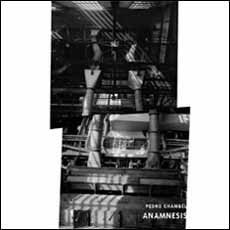
anamnesis
Pedro Chambel | cs004
It
is interesting to notice the countless possible analogies between Cage’s
famous 4’33’’ piece and “Instampita Instrumetale”
by Paolo Firenze (a top figure of the Italian XV century Ars Subtilior)
whose total time in the version which we had access to is exactly 4’33’’.
Being aware of the fact that Cage’s piece was conceptually created
in that specific shape, we indeed are in both cases before not only great
subtlety and depuration but also extreme formal complexity next to silence
in both cases (following here Cage’s rule according to which there
is no silence). In both cases total involvement of the listener is required.
As Cage was determinant in his time and decisively influenced the XX century,
also “Ars Subtilor” was developed in a time of change and
evolution from the Middle Ages to the Renaissance with all that is meaningfully
linked to such an era in terms of innovation and rupture with the then
current archaic methods, and in a singular way the breakthrough of a certain
musical vanguard in its time.
Bearing these facts in mind, and after decades in which improvised music
was characterized by extreme rethoric, it is by no means awkward to witness,
in our days, the opening of absolutely new roads in this particular music
context which, once again, may be considered innovating. In fact we’re
witnessing today an aesthetics of contention by a new generation of European
improvisers who without totally breaking with their legacy find within
it new languages and solutions to the deadlock the (non) - idiomatic practice
of free improvisation had reached. Closing the circle now we can watch
a return to silence through almost minimalist devices in the language
and praxis of all new improvisers, whether through the appeal to a small
number of instruments or even through the proliferation of solo registers
(now that big orchestras time seems to be over). And this is also noticeable
both in the instrumental speech - characterized by extreme contention
and in the conceptualization of silence as another determinant element
of the tongue these new musicians speak, changing music into a more difficult
thing but a more fascinating one at the same time.
This is the context of «Anamnesis» Pedro Chambel’s absolute
solo debut. And the name of the CD is no accident at all. Closely following
all editorial production in the area of New Improvisation languages as
well as Contemporary Music (both universes becoming more and more interconnected
these days) and assiduously reflecting over these practices, this portuguese
musician has runned over his memories - both older and closer - to, starting
from there, proceed in a somehow alchemic way and produce a depurated
synthesis. The final result is a formally and conceptually accomplished
work of great strength and effectiveness in the formulation of the concepts
that underlie it. Using an aesthetics of low volume noise and a minimalist
grammar always through the resource to live electronics, Chambel carefully
gets closer in a very personal fashion to table top guitar names such
as Keith Rowe - moving away from such closeness in the very last minute,
however. His "démarche" makes you think of Walter Fahndrich,
in his solo CD «Viola» (ECM new series) in the barrenness
of his language and his intentional use of silence (kept the necessary
differences in mind). These are just two examples amongst others of sources
to which Pedro Chambel has (un)consciously appealed. This would also explain
why such a title as «Anamnesis» is so rightfully applied to
this work. However - lets not forget it - memories can sometimes betray
you. Whatever they are.
José Oliveira